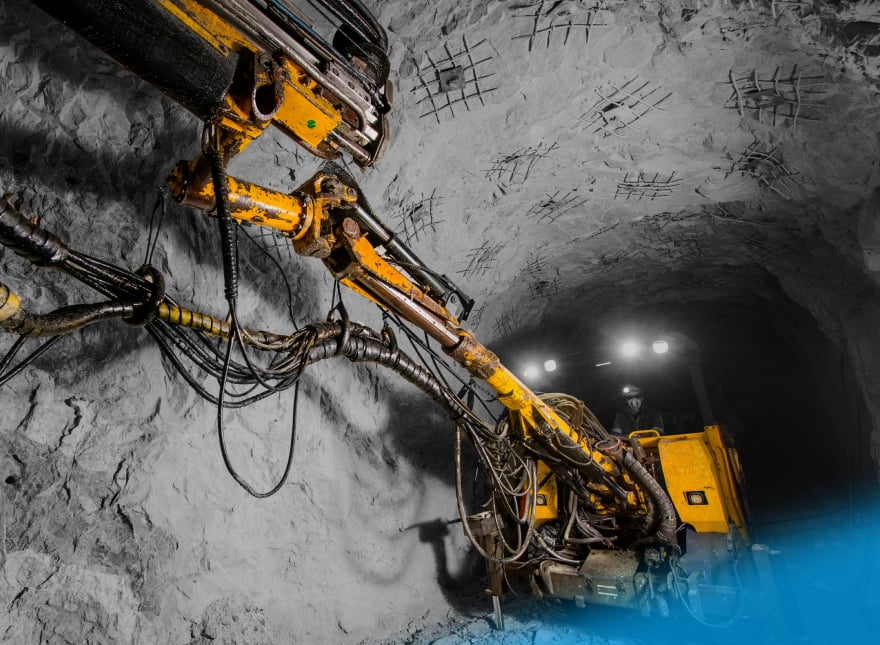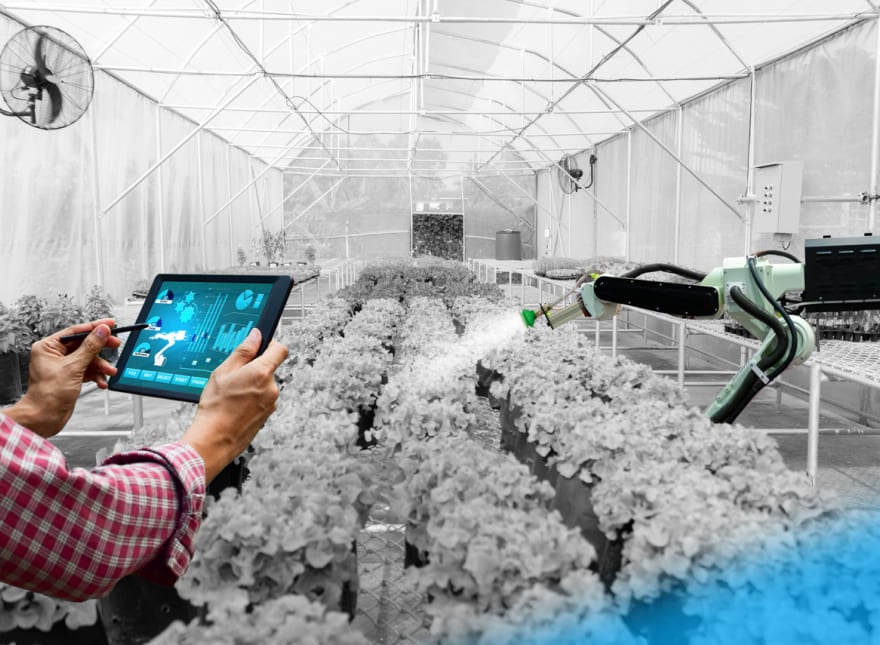Check out our latest blog article: From component to enterprise – modular robotics done right.
IoT, Big Data, and AI Make the Oil and Gas Industry Efficient. Here’s How
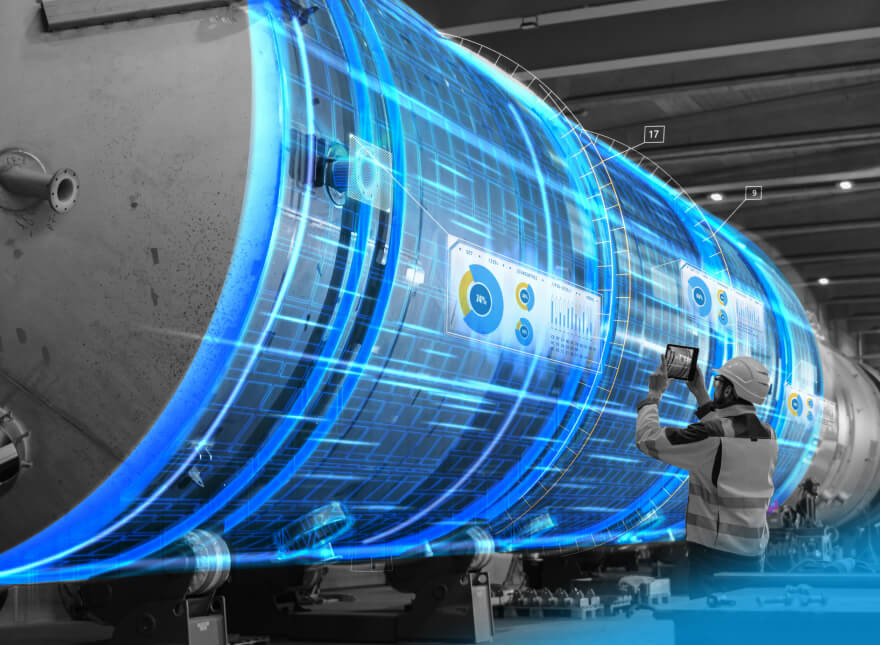
In times when the carbon footprint is a frequently discussed topic, the oil and gas sector is among the first who have to take green concerns into account.
Many countries want to decrease both dependency on foreign energy supplies and the level of CO2 emissions. Oil and gas companies, in turn, produce energy locally but also have a high carbon footprint. The industry operations account for 9% of all emissions—both CO2 and non-CO2. Thus, efficiency in energy consumption and energy production are the main priorities for businesses.
Going smart with IoT in oil and gas can definitely add to efficiency. Discover new opportunities whether you’re an upstream, midstream, or downstream business. Check out IoT oil and gas use cases right below.
How to Add Efficiency on Board
You can improve only what you can measure. Add IoT, cloud computing, and artificial intelligence to your business to make your processes smarter.
For upstream companies
If you’re an upstream business searching and producing natural gas fields and crude oil, your list of requests is huge. These include:
- Better efficiency in the field
- Greater transparency in supply chain
- Need for complex and modern solutions that work with aggressive substances and extreme temperatures
- Easier maintenance of legacy equipment
- Compliance with changing emission regulations
- Improved safety
With IoT, you can save time and money with remote control during research and drilling, get more value from extracted materials, and reduce downtime of equipment. Additionally, you can protect workers from incidents if you equip them with wearables.
For midstream companies
If you’re a midstream team taking care of transportation, you want to send materials to a refinery by tanker ships, pipelines, and trucking fleets on time and without extra expenses. This process needs to be seamless, high-quality, and efficient. IoT on board will save the budget on optimized logistics, better cargo quality, and fewer breakdowns. And also sensors may help you follow the strict regulations of each region you operate in.
For downstream companies
If you're a downstream company, you want to distribute and sell the product faster and at the best price. No matter what you offer—natural gas, diesel oil, petrol, gasoline, or heating oil. IoT with predictive analytics in the pipeline will help you forecast demand, find customers with fewer effort, and calculate the best price.
In general, the internet of things services allow upstream, midstream, and downstream businesses to cooperate more effectively. And even more, going smart with IoT brings companies a more appealing public image. This gives companies a competitive advantage.
As a result, many oil and gas companies take part in decarbonizing the economy. Businesses like Total and Shell set targets to drive down carbon emissions—towards zero. Others diversify investments into renewables, energy efficiency, and biofuels. Businesses such as Iberdrola and Ørsted (the “first offshore wind major”) focus on renewable energy.
3 Core Aspects of Digital Transformation in Oil And Gas
Depending on the business goal, there’re many ways how IoT and related technologies can transform oil and gas companies. Here are the main ones:
1. Asset monitoring. With IoT, you can attach sensors to physical assets and remotely watch a variety of parameters through the app. This can be real-time, historical, and maintenance data. The collected data will help you track performance and detect issues, outages, or dangerous environmental conditions. You can boost efficiency in the fields.
2. Resource monitoring. Data helps oil and gas businesses see the potential of reservoir resources. For example, a network of thousands of seismic sensors can help find the best drilling sites for oil. It’s possible to map surface sites to see new drilling locations and improve the productivity of existing areas. Such a smart search drastically saves time and money. And it makes it possible to predict production volumes and avoid inefficient areas. Moreover, you can track how much customers consume and predict demand.
3. Smart predicting. AI-enabled systems help reveal hidden patterns and make predictions everywhere—from upstream to downstream areas. Smart algorithms detect unusual behavior in smart equipment and take immediate action. For example, you can predict downtime and so avoid costly repairs. It’s also possible to predict volumes of oil and gas production, measure needs, and calculate the price for end users. Regarding logistics, AI can predict time spent for transfer to the refinery. The superpower of AI is that machine learning solutions are only getting better over time.
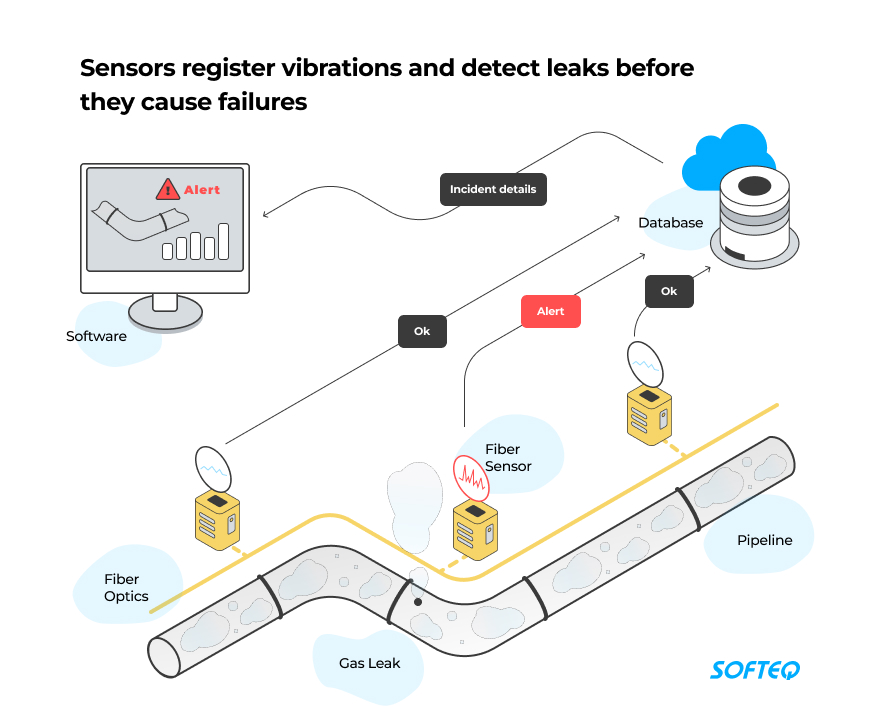
What IoT Brings to the Field: Practical IoT Oil and Gas Use Cases
You can benefit from an IoT solution, whether you’re upstream, midstream, or downstream. There’re many spots to watch—containers, drilling equipment, pipelines, trucks, tanks. And there are lots of things to predict—failures, downtimes, market demand. Let’s take a look at promising IoT applications in the oil and gas industry. Real-life examples included.
Enhanced Performance
With IoT in oil and gas, it’s possible to collect sensor data from containers, drilling equipment, pipelines, and trucks. This can be product level in tanks, health state of the equipment, or historical data about time spent for transfer to the refinery. Smart predicting in the pipeline gives you hints about how to increase efficiency there. As a result, you can maximize earnings.
Real-Life Example. Siemens Energy and Bentley Systems created a joint solution for oil and gas. It uses predictive analytics to track assets and improve maintenance schedules in compressor stations and gas processing plants. The tool runs powerful tests and risk scenarios to enhance plant uptime.
Benefits
With IoT advances tracking and managing of assets, smart oil and gas companies:
- Get accurate and real-time information on product levels in containers and tanks. So they can plan refilling them or replacing parts
- Increase scores for producing oil and gas materials
- Watch equipment components and keep them highly functional
Remote Monitoring
IoT systems can replace human workers where remote monitoring is possible. So you can watch pipelines, oil wells, or production in refineries remotely. At a basic level, sensors collect data, algorithms analyze it, and systems notify what’s happening. Now, there are even more sophisticated alternatives available.
Consider monitoring with digital twins—virtual replicas of equipment units. It’s possible to attach sensors to physical objects in the field and send performance data to virtual copies. Upstream companies can drill down virtually and keep track of project updates. A 3D look-around shows bottlenecks and issues. You can also compare real-time outputs with historical data to see how grid upgrades affected the performance. The digital twin technology can even make virtual bug fixing possible.
Where sensors can’t help, drones come in handy. They can check equipment conditions by capturing photo and video. Software with ML capabilities processes the collected visuals to detect abnormal behavior. Such monitoring helps smart oil and gas companies reduce operational costs. Also, there’s no need to send employees to hazardous areas.
Real-Life Example. A solution from Sky-Futures helps oil and gas companies inspect oil rigs with drones. Dedicated software uses smart algorithms to process visual data. ML capabilities, in turn, identify equipment faults in 2D images.
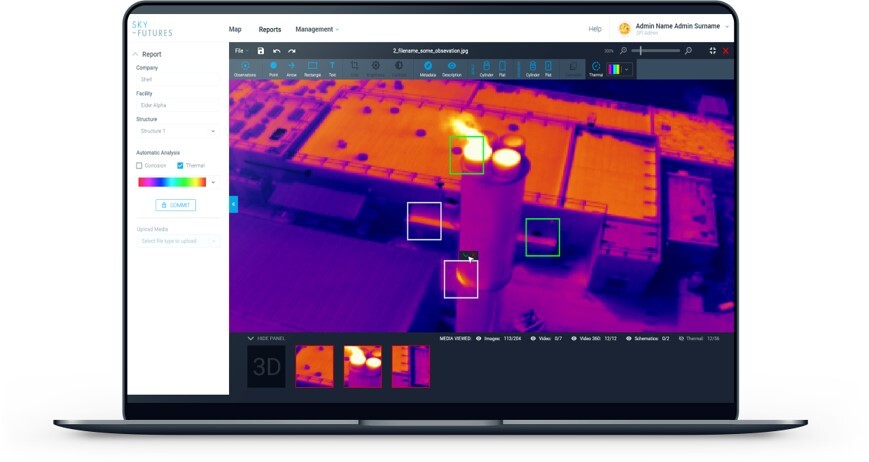
ML algorithms identify equipment faults in 2D images captured by industrial drones
Benefits
Take a look at some potential benefits of remote monitoring in the field:
- Increasing speed and quality of oil and gas production
- Watching processes in real time
- Improving maintenance services though optimized parameters and forecasted issues
Predictive Maintenance
Deploying IoT for costly equipment will let you see abnormalities before they cause failures in vacuum pumps or shaft bearings. So you can attach sensors to rigs, tanks, pipelines and collect data on their parameters. In case of trouble, a dedicated app will send an alert. Technicians can also control wear and tear of each piece of equipment. This makes it easier to provide timely repairs, thus avoiding catastrophes. In terms of sustainability, alerts will prevent leaks of dangerous waste.
Real-Life Example. Uptake created an ML-assisted application to predict what will happen in the fields. The solution collects and analyzes the health status of each asset and detects signatures that tell about potential issues.
Benefits
Smart predictive maintenance solutions help oil and gas companies to:
- Keep equipment highly functional to maximize uptime
- Predict failures or downtimes of rigs and so avoid shortages and costly repairs
- Deploy automatic shutdown to prevent more serious troubles
- Boost production scores
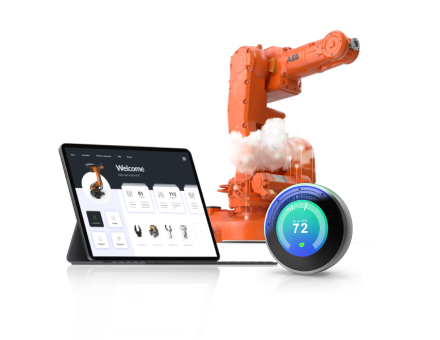
Safety Management
IoT solutions for the oil and gas industry help create a healthier working environment.. To comply with industry safety regulations, you may need to:
- Watch working conditions
- Track emissions levels at production sites
- Check offshore rigs for anomalies
There’re plenty of working solutions here. Consider GPS systems, hazard reporting apps, and even drone inspections. Some companies are advancing protection with wearables. It can be a smart wristband, a smart vest, helmet, or AR glasses. Each secures workers while monitoring conditions and the surrounding environment and warns in case of emergency. Sensors can also notify a manager of a sign of worker’s distress or fatigue.
Real-Life Example. Blackline offers to protect stuff with wearables. An individual device tracks the location of each worker, watches for possible gas exposure, and shows hazardous areas. It has two-way communication. So team members can receive notifications and send voice messages.
Benefits
Smart safety management solutions help the oil and gas industry in:
- Keeping employees safe and so reducing the number of accidents and hazards in the fields
- Avoiding project delays
- Saving budget for insurance payments
- Preventing reputation damage
Take-Home Message
IoT technology is a business change accelerator for oil and gas companies. You have the potential to add automation, efficiency, and sustainability to your business. The list of IoT solutions for the oil and gas industry is huge. The technology makes possible the following:
- Smart asset tracking
- Performance monitoring
- Efficient use of the equipment in the field
- Stricter compliance with safety, logistics, or emission regulations
While making the shift, you need a trusted сonsultant to go through a strategic business change and a robust tech effort to put in place multiple technologies around IoT—big data, cloud computing, and AI capabilities. Softeq is here to help you make the process of adoption smooth, effective, and affordable. So are you in?
More articles on the topic



